Wyatt Earp and Bat Masterson planted the seed that launched the great "Tex" Rickard.

The manly art of prizefighting has been around since the beginning of recorded time, but only in the last decade has the sport been promoted into a billion-dollar industry. The evolution of boxing from a working-class pastime of bare-knuckle brawling to a pay-per-view mega-attraction can be traced back to two legendary lawmen from the Old West: Wyatt Earp and Bat Masterson.
The seed that launched the career of the greatest showman boxing promoter in American history was planted during Wyatt’s years in Alaska.Wyatt “Referee” Earp
Wyatt arrived in Nome in the summer of 1899. By then, Wyatt had gained some fame in the boxing world—not all good.
Wyatt, in his early 20s, began officiating boxing matches across Wyoming Territory for rail crews and buffalo hunters. Before Wyatt got linked with heavyweight champion Bob Fitzsimmons, a pal of Wyatt’s, Bat Masterson, helped Judge Roy Bean promote a bout between Fitzsimmons and Peter Maher.
With boxing outlawed in Texas, the bout was fought in a makeshift ring on Mexican soil, in the town of Coahuila, with spectators viewing the fight from a hillside overlooking the Rio Grande.
A former lawman in Dodge City, Kansas, Masterson secured the ticket handling and fight purse. He also covered the sport in his Denver, Colorado, newspaper column for George’s Weekly and promoted prizefights at his Olympic Athletic Club.
Masterson’s history in the boxing arena included serving as the timekeeper at the first World Heavyweight Championship, under the Queensberry Rules. In the 1892 battle, “Gentleman Jim” Corbett defeated “Boston Strong Boy” John L. Sullivan by knockout in the 21st round.
In the 1896 bout in Mexico, Fitzsimmons scored a knockout win in 95 seconds. Masterson moved on along the boxing circuit.
Esta historia es de la edición September 2018 de True West.
Comience su prueba gratuita de Magzter GOLD de 7 días para acceder a miles de historias premium seleccionadas y a más de 9,000 revistas y periódicos.
Ya eres suscriptor ? Conectar
Esta historia es de la edición September 2018 de True West.
Comience su prueba gratuita de Magzter GOLD de 7 días para acceder a miles de historias premium seleccionadas y a más de 9,000 revistas y periódicos.
Ya eres suscriptor? Conectar
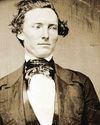
FIREARMS COLT WALKER 47
THE LEGENDARY HANDGUN THAT REALLY WON THE WEST
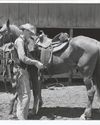
HERITAGE TRAVE
THE AMERICAN WEST IN ALL ITS GLORY OUR ANNUAL FAVORITES LIST CELEBRATES DESTINATIONS ACROSS THE WESTERN UNITED STATES.

Wild Turkey, and Not the Drinkin' Kind
The actual bird was a favorite of pioneers.
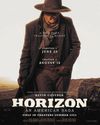
THE PASSION PROJECTS OF THE MODERN WESTERN
A YEAR OF UNDERRATED EXCELLENCE
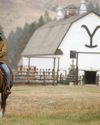
WESTERN BOOKS THEN AND NOW
THE STATE OF WESTERN HISTORY AND FICTION PUBLISHING IN 2024 IS ONE OF GRIT AND DETERMINATION.
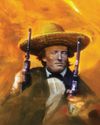
SAMUEL WALKER VALIANT WARRIOR
While a prisoner at the castle of Perote, Walker was put to work raising a flagpole. At the bottom of the hole, Walker placed a Yankee dime, vowing to someday come back and retrieve it, at the same time exacting revenge on his Mexican captors. In the summer of 1847, when Walker's mounted riflemen returned and routed Santa Anna's guerillas, the young captain kept his promise and got his dime back.
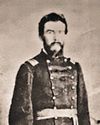
THE BATTLE OF CENTRALIA
ON September 27, 1864, Bloody Bill Anderson and about 80 men took over the small railroad village of Centralia, looting stores and discovering a barrel of whiskey that they hauled out into the street. Wild enough when sober, they soon were roaring drunk.
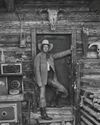
THE MAN WHO SHOOTS THE WEST
Jay Dusard is a living American photographer who has made Arizona his home for over 60 years, seeing it first in 1960 on a visit, moving here for good in 1963.
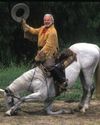
A TRUE WESTERNER INDEED PHIL SPANGENBERGER 1940-2024
Spangenberger had Nevada trained to bow by the legendary horse trainer, Glenn Randall, who trained Roy Rogers' Trigger, Gene Autry's Champion, Rex Allen's Koko and the Ben Hur chariot horses, among other great equines.

Where Did the Loot Go? - This is one of those find the money stories. And it's one that has attracted treasure hunters for more than 150 years.
Whatever happened to the $97,000 from the Reno Gang's last heist? Up to a dozen members of the Reno Gang stopped a Jeffersonville, Madison and Indianapolis train at a watering station in southern Indiana. The outlaws had prior intelligence about its main load: express car safes held about $97,000 in government bonds and notes. In the process of the job, one of the crew was killed and two others hurt. The gang made a clean getaway with the loot.